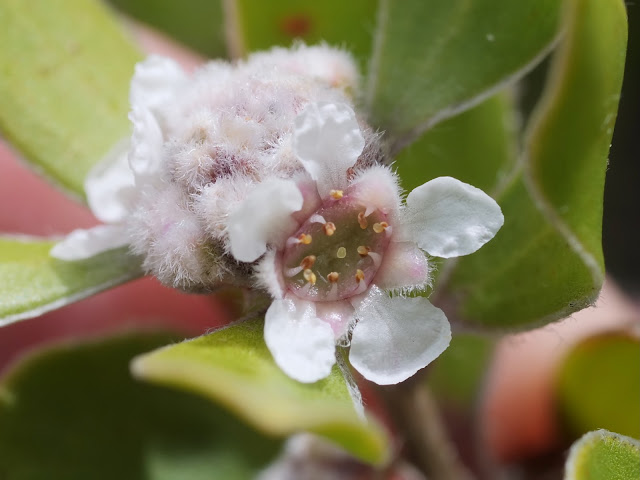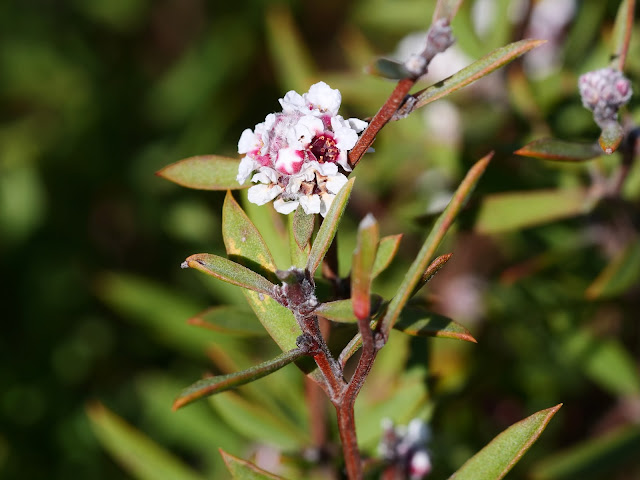Taxandria parviceps
Parviceps from the Latin parvi - small and ceps - headed. Refers to the small flower heads.
Occurs from near Dardanup throughout the extreme south west of the state as far east as Two Peoples Bay; also recorded north to the Porongurup and Stirling Ranges. Grows in heath, shrubland, woodland or forest, often on the margins of seasonally wet areas, mostly on sandy soils and often forming quite dense thickets. In the Stirling Range the species has been recorded on heavier soils at rocky sites.
A shrub or very small tree to 4 m tall. The leaves usually clustered in short axillary shoots, stalkless, spreading, curved outward in upper half, narrowly obovate or narrowly elliptic, occasionally some leaves obovate to elliptic, thick, the upper surface flat to slightly concave, the lower surface slightly convex, typically 3–7 mm long, 0.6–1.5 mm wide, hairless but sometimes with minute hairs at the leaf base, tip rounded or pointed often with a minute point.
The flowers are in more or less globular clusters, terminating short axillary shoots, bracts minutely hairy in part, bracteoles somewhat hairy. The sepals have rounded tips and are largely hairless. Petals white. Stamens 10, one opposite each sepal and petal.
Fruits are typically in globular clusters about 6 mm across, each capsule cup shaped and about 2 mm across, sometimes hairy.
Flowers mostly July to October with petals persisting for several months after that; fruits November onwards the fruits persisting for up to a year.
All photographs (c) Keith Morris, some rights reserved (CC BY-NC) unless otherwise indicated.









Comments
Post a Comment